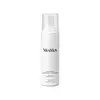What's inside
What's inside
 Key Ingredients
Key Ingredients

 Benefits
Benefits

 Concerns
Concerns

 Ingredients Side-by-side
Ingredients Side-by-side

Aloe Barbadensis Leaf Juice
Skin ConditioningCocamidopropyl Betaine
CleansingSodium Cocoyl Isethionate
CleansingGlycerin
HumectantCannabis Sativa Seed Extract
EmollientXanthan Gum
EmulsifyingTerminalia Ferdinandiana Fruit Extract
AntioxidantPunica Granatum Extract
AstringentRosa Canina Fruit Extract
AstringentCitrullus Lanatus Fruit Extract
Skin ConditioningCamellia Sinensis Leaf Extract
AntimicrobialPantothenic Acid
Skin ConditioningNiacinamide
SmoothingSodium Benzoate
MaskingPhenoxyethanol
PreservativeSodium Dehydroacetate
PreservativeAloe Barbadensis Leaf Juice, Cocamidopropyl Betaine, Sodium Cocoyl Isethionate, Glycerin, Cannabis Sativa Seed Extract, Xanthan Gum, Terminalia Ferdinandiana Fruit Extract, Punica Granatum Extract, Rosa Canina Fruit Extract, Citrullus Lanatus Fruit Extract, Camellia Sinensis Leaf Extract, Pantothenic Acid, Niacinamide, Sodium Benzoate, Phenoxyethanol, Sodium Dehydroacetate
Water
Skin ConditioningCocamidopropyl Betaine
CleansingGlycerin
HumectantDisodium Cocoamphodiacetate
CleansingSodium Cocoamphoacetate
CleansingDecyl Glucoside
CleansingCaprylic/Capric Triglyceride
MaskingCoco-Glucoside
CleansingCurcuma Longa Root Extract
MaskingBenzyl Alcohol
PerfumingBrassica Oleracea Capitata Leaf Extract
Skin ConditioningCitrus Aurantium Dulcis Peel Oil
MaskingChlorophyllin-Copper Complex
AntioxidantPhytonadione Epoxide
AstringentTeprenone
Skin ConditioningAloe Barbadensis Leaf Extract
EmollientPhenoxyethanol
PreservativeCitric Acid
BufferingDehydroacetic Acid
PreservativeSodium Benzoate
MaskingEthylhexylglycerin
Skin ConditioningSodium Bicarbonate
AbrasiveLimonene
PerfumingWater, Cocamidopropyl Betaine, Glycerin, Disodium Cocoamphodiacetate, Sodium Cocoamphoacetate, Decyl Glucoside, Caprylic/Capric Triglyceride, Coco-Glucoside, Curcuma Longa Root Extract, Benzyl Alcohol, Brassica Oleracea Capitata Leaf Extract, Citrus Aurantium Dulcis Peel Oil, Chlorophyllin-Copper Complex, Phytonadione Epoxide, Teprenone, Aloe Barbadensis Leaf Extract, Phenoxyethanol, Citric Acid, Dehydroacetic Acid, Sodium Benzoate, Ethylhexylglycerin, Sodium Bicarbonate, Limonene
Ingredients Explained
These ingredients are found in both products.
Ingredients higher up in an ingredient list are typically present in a larger amount.
Cocamidopropyl Betaine is a fatty acid created by mixing similar compounds in coconut oil and dimethylaminopropylamine, a compound with two amino groups.
This ingredient is a surfactant and cleanser. It helps gather the dirt, pollutants, and other impurities in your skin to be washed away. It also helps thicken a product and make the texture more creamy.
Being created from coconut oil means Cocamidopropyl Betaine is hydrating for the skin.
While Cocamidopropyl Betaine was believed to be an allergen, a study from 2012 disproved this. It found two compounds in unpure Cocamidopropyl Betaine to be the irritants: aminoamide and 3-dimethylaminopropylamine. High-grade and pure Cocamidopropyl Betaine did not induce allergic reactions during this study.
Learn more about Cocamidopropyl BetaineGlycerin is already naturally found in your skin. It helps moisturize and protect your skin.
A study from 2016 found glycerin to be more effective as a humectant than AHAs and hyaluronic acid.
As a humectant, it helps the skin stay hydrated by pulling moisture to your skin. The low molecular weight of glycerin allows it to pull moisture into the deeper layers of your skin.
Hydrated skin improves your skin barrier; Your skin barrier helps protect against irritants and bacteria.
Glycerin has also been found to have antimicrobial and antiviral properties. Due to these properties, glycerin is often used in wound and burn treatments.
In cosmetics, glycerin is usually derived from plants such as soybean or palm. However, it can also be sourced from animals, such as tallow or animal fat.
This ingredient is organic, colorless, odorless, and non-toxic.
Glycerin is the name for this ingredient in American English. British English uses Glycerol/Glycerine.
Learn more about GlycerinPhenoxyethanol is a preservative that has germicide, antimicrobial, and aromatic properties. Studies show that phenoxyethanol can prevent microbial growth. By itself, it has a scent that is similar to that of a rose.
It's often used in formulations along with Caprylyl Glycol to preserve the shelf life of products.
Sodium Benzoate is a preservative. It's used in both cosmetic and food products to inhibit the growth of mold and bacteria. It is typically produced synthetically.
Both the US FDA and EU Health Committee have approved the use of sodium benzoate. In the US, levels of 0.1% (of the total product) are allowed.
Sodium benzoate works as a preservative by inhibiting the growth of bacteria inside of cells. It prevents the cell from fermenting a type of sugar using an enzyme called phosphofructokinase.
It is the salt of benzoic acid. Foods containing sodium benzoate include soda, salad dressings, condiments, fruit juices, wines, and snack foods.
Studies for using ascorbic acid and sodium benzoate in cosmetics are lacking, especially in skincare routines with multiple steps.
We always recommend speaking with a professional, such as a dermatologist, if you have any concerns.
Learn more about Sodium Benzoate